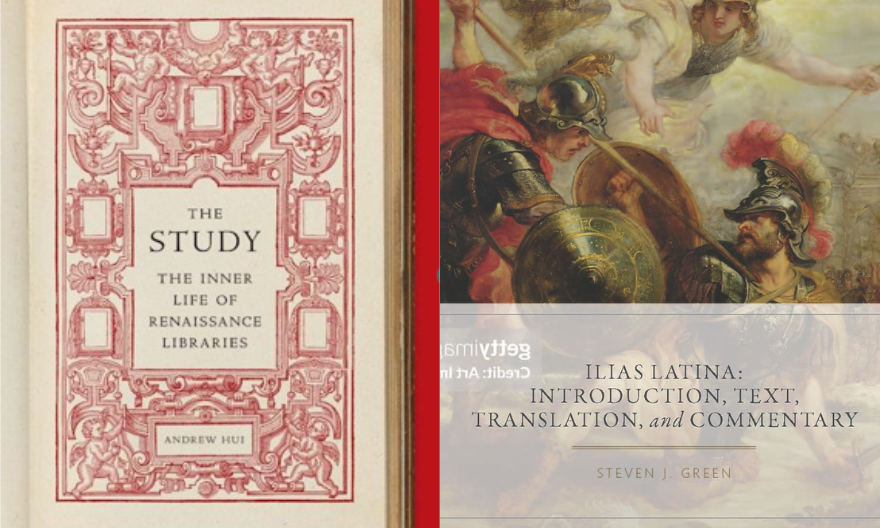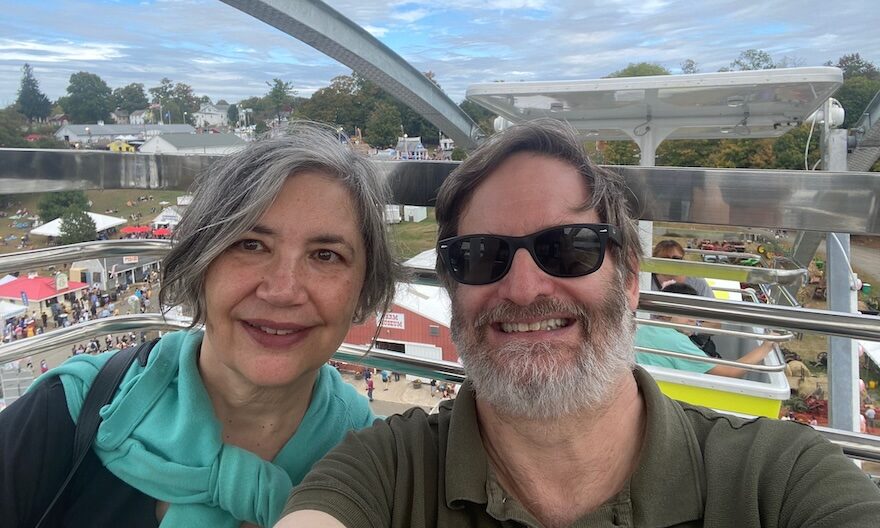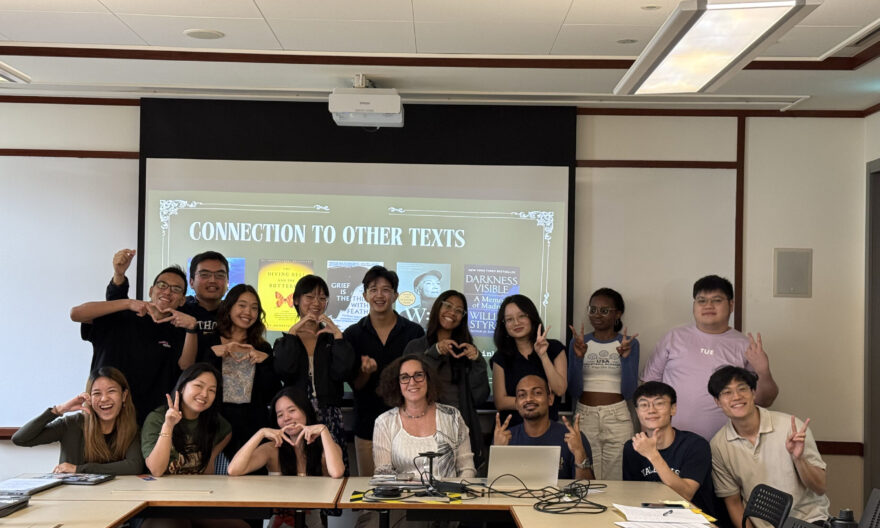Yale-NUS PhD Scholarship holder receives award from the Society for the Study of Evolution for research on butterfly wing scales
As a fully undergraduate liberal arts and sciences college, Yale-NUS College does not offer graduate programmes. However, there are still opportunities for graduate students to work with our faculty members in different fields of research. As part of the National University of Singapore (NUS) Research Scholarship, Yale-NUS offers three PhD scholarship places a year to post-graduate students who wish to work with our faculty.
Ms Seah Kwi Shan, a final-year NUS Department of Biological Sciences PhD candidate mentored by Yale-NUS Assistant Professor of Science (Evolutionary Photonics and Ornithology) Vinod Kumar Saranathan, is utilising state-of-the-art visualisation tools to expand upon the scientific community’s understanding of the development of structural coloration in butterfly wing scales. In November 2019, Ms Seah’s research into the ‘Comparative Development of Biophotonic Nanostructures in Butterfly Wing Scales’ was the only project outside of North America to have been selected for the Society for the Study of Evolution’s Rosemary Grant Advanced Award, a research grant for students in the later stages of their PhD programmes. Vivid blue and green butterfly wing colours are often produced by biophotonic structures several hundred nanometers in size (about 500 times smaller than a human hair), which interfere with and scatter light. Ms Seah’s research focuses upon the evolutionary mechanism behind the formation of these nanostructures, a puzzle which has met with little progress for over three decades due to limitations in scientific methodology. By drawing on cutting-edge optical imaging, she is comparing the formation of these nanostructures in different families of butterflies.
 A diagram of butterfly scale cell surface nanostructures from Ms Seah’s research. The first two images (left to right) were taken with a scanning electron microscope, while the third was taken via structured illumination microscopy and captures the formation of surface nanostructures. Images provided by Seah Kwi Shan.
A diagram of butterfly scale cell surface nanostructures from Ms Seah’s research. The first two images (left to right) were taken with a scanning electron microscope, while the third was taken via structured illumination microscopy and captures the formation of surface nanostructures. Images provided by Seah Kwi Shan.
Ms Seah’s initial application for the Yale-NUS PhD Scholarship was motivated by a strong interest in biological science.
“Asst Prof Saranathan (whose research speciality lies in the evolutionary process of animal structural colouration] and I had a chat about the possible work in his laboratory. I was attracted to the scope and felt there is a huge potential in this project. Asst Prof Saranathan holds an appointment in both NUS and Yale-NUS, hence, I was eligible for the scholarship from Yale-NUS as well,” she said.
Throughout the project, Asst Prof Saranathan’s mentorship has proved invaluable to Ms Seah. “Asst Prof Saranathan and I work closely through different phases of this project, and he is always helpful in troubleshooting whenever problems arise,” she said. “As this field is still in its early days, we have constant discussions on ways to move things forward such as trying out new technologies.”
“I see Kwi Shan’s award as a vindication of the immediacy and global scope of our research that is happening at Yale-NUS and NUS,” said Asst Prof Saranathan. “Having these graduate scholarships to support PhD students at Yale-NUS College has been really helpful to further our research goals and build on our strengths and connection with NUS. I hope the College continues to invest in these programmes.”
Added Ms Seah, “Since the nature of my project requires the use of advanced equipment from other facilities, the financial support from the Rosemary Grant Advanced Award is immensely helpful for me to carry out the necessary laboratory work. The data collected is important for my thesis and will be valuable in answering key questions behind nanostructure formation.”
Ms Seah’s research findings also have salient applications in biomimicry, a practice that learns from and mimics the strategies found in nature to solve human design challenges. “With the current trend for machine invention with better efficiency, the choice of materials in manufacturing biomimicry-inspired products has become crucial. In fact, butterfly wings have been the inspiration for several biomimicry applications such as solar panels and sensors,” she explained.
“However, the usual top-down approach used to mimic the nanostructures often result in materials that are not perfect replicates. By having a better understanding of the evolutionary mechanisms involved, researchers can follow the formation process and recreate these structures with better precision.”
As one of the first researchers to advance the scientific literature surrounding biophotonic nanostructure formation, Ms Seah looks forward to publishing her research by the end of this year.
“There is still a lot that we do not know about these mechanisms, so it is exciting to be one of the first few people to discover new things and try to piece the puzzle together,” she concluded. “Knowing the findings from this study can help advance the field of butterfly evolutionary development is also a plus point for me.”




